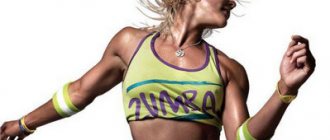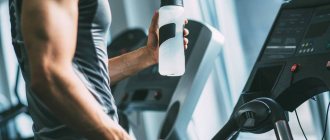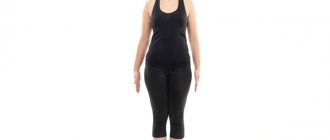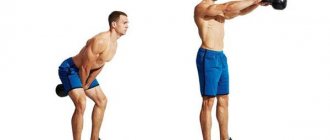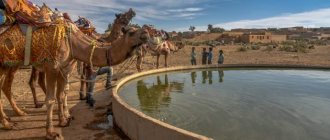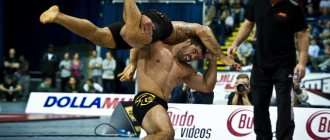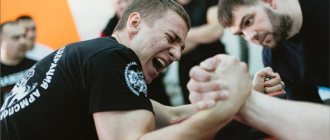Bhujangasana, or cobra pose, is a classic in yoga and is mentioned in ancient texts as an asana admired by Mahatma Gandhi himself. The fourth most important pose has not only positive features, but also negative ones. The article will tell you in detail about the benefits and harms of the cobra pose in yoga, and will also introduce you to the asanas that should be performed after it.
Bhujangasana - cobra snake pose
Snake pose is considered one of the main asanas in classical yoga practice. The technique of performing bhujangasana involves lying on your stomach with your body raised up. Support can be on your hands. The face looks at the ceiling or straight ahead. Legs extended along the floor. It is important to connect the movements of the arms and body with breathing cycles. This will make the snake pose even more effective.
The healing power of cobra asana lies in the fact that it is useful for normalizing the secretions of the internal glands, as well as improving the functioning of the kidneys and digestive system. With its help you can eliminate discomfort in the lumbar and thoracic spine. But bhujangasana has its contraindications. This is especially true for those who suffer from thyroid pathologies. They should be extremely careful while performing this exercise.
This asana energizes and gives strength, flexibility and elasticity to muscle tissue. If a person has slipped spinal discs, they can be eliminated with the help of bhujangasana. It also helps with osteochondrosis of the spine. But with hernias, you should be careful and before performing the cobra pose, you should consult an osteopath.
With the help of this asana, digestion improves, since the asana itself is supine, with the person lying on his stomach. Due to this position, internal massage of the organs is achieved, which has a beneficial effect on their functioning. In addition, bhajangasana is also effective for the functioning of the chakras. It helps manipura, svadhisthana, anahata and vishuddha to open up and become more harmonious.
Subtleties of execution
At the initial stage of the asana, it is necessary to lift the torso solely using the back muscles, without helping with your hands, which will protect the lumbar vertebrae from unnecessary compression and put the thoracic region into action.
By throwing your head back, you activate the thyroid gland. You should not relax your neck, thereby pinching it. Experts recommend performing part of the asana with your head thrown back, then lowering your chin and pulling the top of your head up, while simultaneously increasing pressure on your lower abdomen. This helps to activate the functioning of the kidneys and adrenal glands.
There are several ways to work with attention in Bhujangasana:
- concentrate all your attention on the thyroid gland, inhaling, moving it to the tailbone along the line of the spine, and exhaling, returning back along the same trajectory;
- concentrate your attention in the area between the eyebrows and at the same time observe the state of your own body.
Particular attention must be paid to breathing. You only need to lift your torso while inhaling. Having reached the final position, you should breathe normally, or hold your breath (during dynamic performance). When the body lowers smoothly, you need to exhale.
Experts allow you to perform about five cycles at a time, and it is recommended to gradually increase the time spent in the final position. In this case, we are not talking about a dynamic version at all, because here in the final position you are allowed to breathe calmly.
Description of the cobra pose
The name itself in translation means the word snake. This is where the description of the asana as a cobra or snake pose comes from. Bhujangasana itself resembles the movements of a snake when it opens its hood in the desire to rush at its prey, or when it becomes alert at the sight of something.
Snake pose is very beneficial for digestion. It is believed to ignite the inner fire and also allow kundalini energy to circulate better. It is also effective for opening and harmonizing a person’s chakras.
Execution step by step
Bhujangasana itself is very easy to perform. The stages of its implementation in the classic version are as follows:
- lie on the floor on your stomach;
- stretch your legs along the floor;
- place your hands under your shoulders and lean on them;
- lift the body up;
- gradually reach as high as possible towards the ceiling;
- throw your head back, reaching the top of your head towards your shoulders;
- make sure that the pubis does not come off the floor;
- strive to stretch your back as much as possible;
- delay in position for about 30 seconds;
- gradual return to a supine position.
The cobra exercise should be performed slowly and without sudden movements. If a person has problems with the spine, he should be very careful not to harm the already damaged spinal discs.
You can repeat the exercise up to 3 times. No more. Its effectiveness depends not on the number of repetitions, but on careful adherence to the exercise technique. Variants of performing ardha bhujangasana can be different.
https://youtu.be/Y1uw5q5bhRM
Yoga preparatory exercises
To prepare and better stretch the back during Bhujangasana, the following poses are used:
- Setu Bandha Sarvangasana (Bridge Pose). The asana is performed in a position on the back, supported by the feet and shoulder girdle. The pelvis rises above the floor until a straight line of the hips and body is formed. Hands lie on the floor along the body, fingers pointing towards the heels. The “Bridge” asana stretches the back, strengthens the muscles of the thighs and buttocks, and has a beneficial effect on the respiratory, digestive and reproductive systems.
- Urdhva Mukha Svanasana (“Upward Facing Dog”). The “Upward Facing Dog” and “Cobra” poses are similar to each other: both asanas are performed on the stomach, with the spine arched and the head thrown back. However, the “Dog” pose requires support on straight arms (with the pelvis raised above the floor), and the “Cobra” asana requires bent ones. In some practices, Urdhva Mukha Svanasana is called the “big cobra”.
- Paschimottanasana (leg bending pose while standing and sitting). The reverse of the backbend (a strong forward bend) continues to train the spine and activates the parasympathetic nervous system, while Cobra asana is designed to stimulate the sympathetic nerves. The reclining pose improves blood circulation in the back and abdominal area, digestion and stretches the muscles of the back, legs and calves.
To prepare for the classic Snake pose, a simplified variation of it (Ardha Bhujangasana), reminiscent of the Sphinx pose, is often used. With poor physical fitness and pain in the lumbar spine, the “sphinx” asana can completely replace the “Cobra” pose.
Variations and modifications
In terms of psychological variations, bhujangasana can be performed with or without visualization, and with or without breathing techniques. In this case, if you visualize the thyroid gland or internal organs during the asana, you can improve their functioning.
The most common variations are sphinx pose or ardha bhujangasana, as well as purna bhujangasana, otherwise positioned as a more advanced version of the classic cobra asana.
Bhujangasana in an in-depth version has a better effect on the spine. It works as follows. All the first points of the exercise technique are performed in the same way as in the regular version, but when tilting your head back, you should pull your shoulders and head towards the tailbone as much as possible. The deflection in the spine should be maximum. This option is available only to those people who know how to perform the classic modification without unnecessary stress.
After the asana has ended, you can perform child’s pose and lie down for a while, completely relaxed.
The Sphinx pose is performed in this way: you need to lie on the floor with your stomach, put your forehead on the floor, while turning your feet with the soles up. The forearms should rest completely on the floor, similar to how the sphinx is positioned. The body must be completely relaxed. You can add meditation options or simply breathe using appropriate breathing techniques.
Execution technique
The asana is quite simple to perform, because it does not require great stretching or strong muscles. After looking at the photos of the cobra pose in yoga, which are provided in the article, almost every person will be able to perform it the first time. But still, in order to protect themselves from injury, beginners should do it according to the instructions:
- Lying face down on the floor, you should stretch your legs, simultaneously pressing your feet together and straining your knees. The hands should be located on both sides of the chest with the fingers facing forward.
- After exhaling and resting your palms on the floor, you need to smoothly raise your body until your pubis touches the floor. In this case, it is necessary to evenly distribute the body weight so that it falls on both legs and palms.
- Contracting your buttocks and pressing your legs together, you need to stretch your chest forward and up at the same time, moving your shoulders back and down. It is recommended to stay in this position for 20-30 seconds, then bend your elbows and also smoothly lower to the starting position. The asana should be repeated about 2-3 times.
It is important to remember that when lifting the torso, the pubic bone should remain on the floor at all times, and the navel should be raised by about 3 centimeters. If you raise your navel higher, then it is not your back that will bend, but your knees. Having arched your back, you do not have to keep your arms completely straight, because this depends on the flexibility of your back.
Advantages and contraindications
Among the significant benefits are the positive effects on the spine and abdominal and back muscles. In addition, snake pose is very useful in yoga for stretching the entire body. It allows you to increase the flexibility of your back and the elasticity of your muscle tissue in a short period of time.
The benefits of the exercise are as follows:
- blood circulation in the spine improves;
- the nutrition of the intervertebral discs and the space between them improves;
- clamps and spasms are relieved;
- lung volume increases;
- pain in the thoracic back and lower back is eliminated;
- deep-lying muscle fibers of the back and abs are restored;
- the muscle frame is strengthened;
- the activity of the thyroid gland is stimulated;
- the impact of stress is reduced and fatigue is reduced.
Also, those people who perform bhujangasana quite often or regularly note that their insomnia has disappeared and they began to behave more calmly. It is important to take precautions and not practice bhujangasana if a person has any contraindications.
Benefit
Bhujangasana, like all other backbends, has a strong therapeutic effect. It gives energy, helps relieve back pain, stooped posture, and also helps cope with depression.
Regular performance of the asana allows you to achieve the following effects:
- increased lung volume;
- increased intra-abdominal pressure;
- strengthening and stretching the abdominal muscles;
- getting rid of spinal problems;
- strengthening and rejuvenating the sympathetic nerves of organs;
- stimulation of the functioning of the thyroid and parathyroid glands, as well as the kidneys and adrenal glands;
- improving the functioning of the gastrointestinal tract;
- prevention of stone formation;
- strengthening the spine and buttocks;
- reducing inflammation of the sciatic nerve;
- improvement in asthma;
- relief from stress and fatigue.
Reference! It is written in the Vedas that Bhujangasana eliminates diseases and awakens Kundalini.
Precautions and contraindications
Bhujangasana is quite simple to perform, but like any other asana, it has its contraindications. Among them are:
- pregnancy period;
- serious pathologies of the spinal column;
- oncological diseases;
- severe respiratory diseases;
- pathologies of the cardiovascular system;
- hyperfunction of the thyroid gland.
As a precaution, it should be said that if there are any disorders of the thyroid gland, you should not throw your head too high or back. The cobra exercise or snake pose actually involves throwing your head back. Therefore, people with thyroid pathology should consult their doctor to avoid possible complications.
Common Mistakes
When performing Bhujangasana, people quite often make mistakes, due to which it not only does not bring sufficient benefits, but can also contribute to injury. The most common mistakes are:
- the chest is not fully opened;
- it is not possible to make a correct and uniform deflection;
- the lower back is overloaded and compressed.
Advice for beginners
In hatha yoga, bhujangasana is quite popular and is considered one of the accessible asanas. In practice, it can be convincingly said that the simplified version can be performed by almost anyone. It does not have a negative effect on the human body if the person follows precautions and does not practice bhujangasana if there are any contraindications.
Important points when performing the asana are the following:
- your palms should be pressed as hard as possible onto the floor;
- pull your shoulders back;
- open your chest;
- throw your head back, trying to reach the top of your head towards your tailbone;
- It is better to place your legs next to each other and try to stretch them further along the floor;
- It is best to squeeze your gluteal muscles.
It is best to lift the body upward by tensing the back muscles. This way they will pump more strongly, and the tension will go away faster. If you experience any discomfort or pain in your back, it is better to stop doing the exercise.
Bhujangasana helps the kundalini energy to move freely along the spine. In order to improve the sphere of influence of bhujangasana on the activity of the chakras, it is necessary to visualize or meditate during practice.
For people with a bad spine, you can start by choosing a sphinx asana for yourself. It is considered a lighter version of the exercise. If a person does not have any pathologies, then you can proceed to either a classical or a complicated modification of bhujangasana.
The most common mistakes that people make at the initial stages of practice:
- the pubic bone is not pressed firmly to the floor;
- the chest is not open enough;
- The head is not thrown back well enough.
In order for the bhujangasana exercise to be effective, the technique should be performed with extreme caution, without missing the slightest moment. Every little detail in the asana has its own meaning.
Tuning
The cobra pose in yoga will be performed correctly only if the following rules are followed:
- your palms must be pressed completely to the floor and positioned no narrower than shoulder width;
- shoulders should always be pulled back and down;
- the chest must be expanded and opened as much as possible;
- the neck needs to be stretched and lengthened while performing the cobra pose;
- It is strictly forbidden to relax and spread your legs;
- the knees should be tense while lifting the body and in the final position;
- Having reached the highest point, the buttocks must be squeezed and not relaxed until the body lowers.
